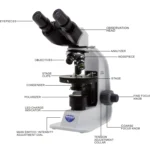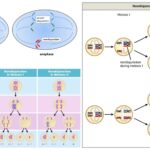O Level Biology 44 Views 1 Answers
Sourav PanLv 9November 2, 2024
State that physical digestion increases the surface area of food for the action of enzymes in chemical digestion
State that physical digestion increases the surface area of food for the action of enzymes in chemical digestion
Please login to save the post
Please login to submit an answer.
Sourav PanLv 9May 15, 2025
Physical digestion increases the surface area of food, which is crucial for the action of enzymes during chemical digestion. Here’s an explanation of how this process works:
Physical Digestion and Its Role
- Definition of Physical Digestion:
- Physical digestion, also known as mechanical digestion, involves the physical breakdown of food into smaller pieces without changing its chemical structure. This process begins in the mouth with chewing and continues in the stomach through churning and mixing.
- Increasing Surface Area:
- When food is mechanically broken down into smaller particles, its overall surface area increases significantly. For example, chewing food reduces it from larger chunks into smaller pieces, allowing for more surface area to be exposed to digestive enzymes.
- This increased surface area is essential because enzymes work more effectively on larger surfaces. The more surface area that is available, the more enzymes can interact with the food particles simultaneously, accelerating the rate of chemical digestion.
- Facilitating Chemical Digestion:
- After physical digestion, the smaller food particles are mixed with digestive juices that contain enzymes. These enzymes are responsible for breaking down complex macromolecules (like carbohydrates, proteins, and fats) into simpler molecules that can be absorbed by the body.
- For instance, in the mouth, saliva contains amylase, an enzyme that begins breaking down starches into simpler sugars. If the food is not adequately chewed (mechanically digested), there will be less surface area for amylase to act upon, slowing down the digestion process.
- Examples of Physical Digestion:
- Chewing: The teeth break down food into smaller pieces, increasing exposure to saliva and digestive enzymes.
- Churning in the Stomach: The muscular contractions of the stomach mix food with gastric juices, further breaking it down into a semi-liquid form called chyme.
- Emulsification by Bile: In the small intestine, bile emulsifies fats into smaller droplets, increasing their surface area for lipase action.
0
0 likes
- Share on Facebook
- Share on Twitter
- Share on LinkedIn
0 found this helpful out of 0 votes
Helpful: 0%
Helpful: 0%
Was this page helpful?




